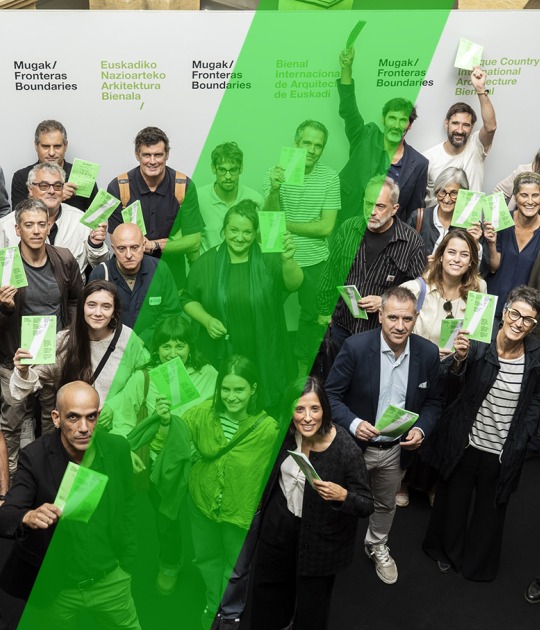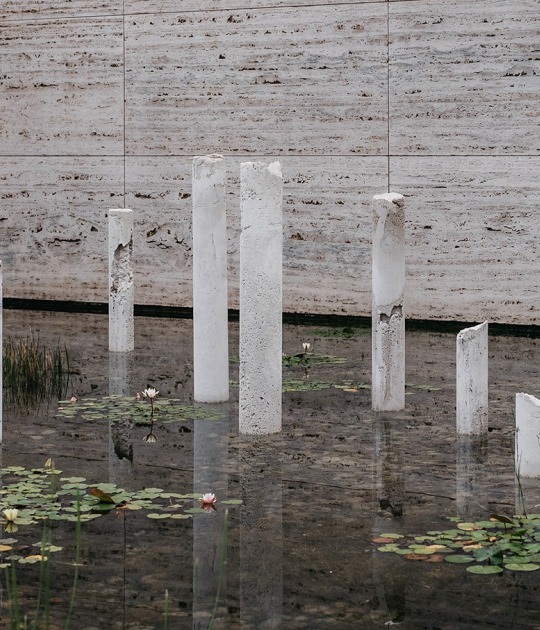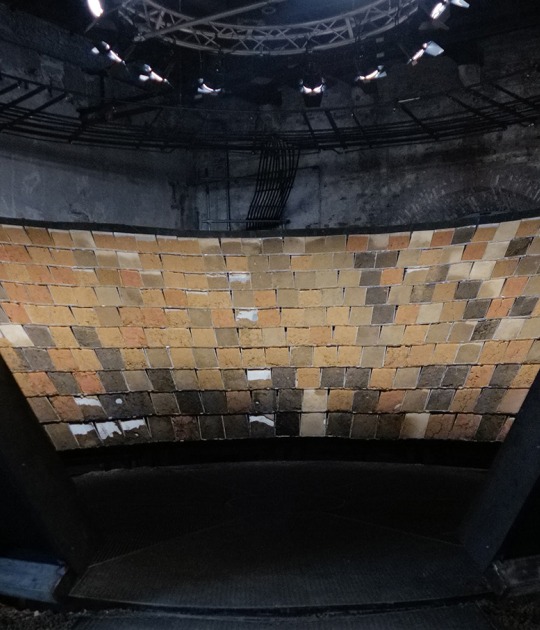
The project marks the first "Visionary Journey" presented in a museum and is part of an ongoing collaborative partnership between OMA/Shohei Shigematsu and Louis Vuitton. Spread across the 2,200 square meters of the Nakanoshima Art Museum, the galleries are conceived as distinct sets of a continuous story, offering a spatial diversity that reflects the diversity of Louis Vuitton's creativity.
History, timeless codes, the process behind craftsmanship, and cultural dialogues are illustrated through an active scenography that stimulates interaction between space, object, and viewer. Each gallery is conceived as a habitable vessel for travel and observation, in which each key element is expanded or abstracted from its theme, generating specific spatial devices that accompany the narrative.
Neither chronological nor purely thematic, the exhibition offers a spatial range—in form, scale, density, light, transparency, and materiality—in which architectural elements, design motifs, artisanal techniques, and traditional materials drawn from the cultural heritage of Louis Vuitton and Japan merge to create new resonances and dialogues. Through a gradient experience, "Visionary Journeys" captures Louis Vuitton's constantly evolving expertise and creativity to connect with the world.

"Visionary Journeys" at the Nakanoshima Museum of Art by OMA / Shohei Shigematsu. Photography courtesy by Louis Vuitton.
Project description by OMA/Shohei Shigematsu
Trunkscapes
Trunkscapes use trunks as modules to construct sculptures and spaces encapsulating the craftsmanship and innovation of the House. In Osaka, two different installations are created from the same language.
In the atrium, Courrier Lozine 90 trunks are stacked vertically in six configurations to compose a set of lanterns. Trunks are composed of wood frames covered in four colors of Monogram washi paper. Suspended from the ceiling, the 12.5 meter tall lanterns emphasizing the grand height of the five-story space, while emitting a soft glow that makes a welcoming first encounter to the exhibition.
On the fifth floor, a hemispherical Trunkscape marks the exhibition’s entrance. Visitors are invited to step into a dome constructed from 138 authentic Louis Vuitton Courrier Lozine 80 and 90 trunks in four sizes and three colors of Monogram canvas. The self-supporting structure showcases strength and lightness of the Louis Vuitton’s emblematic piece. Reflected in the black glass floor, the dome appears as complete globe, a nod to the sphere showcased at World Expo 2025 Osaka and theme of exploration.

Asnières
Asnières traces the House’s origins from the Vuitton family home, and workshops which are still active today. Elements of Asnières – stained-glass bay window and tiles, wood chevron floor and rug, and horseshoe chairs – are recreated at scale. Embedded within the realistic set, a timeline of historical photographs to contemporary illustrations faces a large-scale depiction of an historical etching.
Origins
Louis Vuitton’s history of creative vision and evolution coalesces as an inhabitable archive of 320 artifacts and 316 cutouts. A continuous narrative unfolds within a basket-like armature, hand-woven from bamboo in the spirit of craftsmanship. The organic structure is manipulated to form pockets that define six eras of the House, from 1821 to present day.
Expeditions
Taking inspiration from Louis Vuitton’s evolution with the changing modes of travel, an inflatable hot-air balloon is inserted into the gallery and adapted for display. Comprised of 14 modules, it integrates platforms for 66 artifacts. The interior “dome” becomes a surface for projection. The iconic collapsible Tilbury anchors the gallery, rotating on a moving platform. Opposite the inflatable structure, sketches and illustrations from Louis Vuitton travel books line the wall.

Louis Vuitton and Japan
Louis Vuitton and Japan explores the deep artistic and cultural exchanges between the brand and the country through five lenses – early Japonisme inspirations, contemporary collaborations with Japanese artists, traditional tea ceremonies, and kawaii culture. Historic and contemporary artworks, garments, and objects from the House and on loan from museums around Japan are carefully choreographed using a simple, modular platforms reminiscent of tatami mats. Varying in size for the diverse content, and suspended at different heights, the platforms enhance curatorial configurations and dialogues. The same system continues on the ceiling, creating a horizontal landscapes above and below the objects.
Materials
Four Louis Vuitton materials – wood, metal, leather, and canvas – are explored in a library of their creative applications. Bags, accessories, games, and wares are displayed in modular cubes in seven different sizes. The transparent cubes are clustered into four “stacks”, each dedicated to a different material, creating a dense field of suspended objects.
Monogram Canvas
The history and reinvention of Louis Vuitton’s iconic Monogram canvas is presented in two parts. The first room charts a timeline on a suspended, sinuous platform displaying 40 artifacts from its development – from first inspirations, including pieces from Japan, to first applications. In the next room, contemporary applications are exhibited as a constellation of 112 Monogram bags. Like planetary orbits, five concentric, rings rotate around a central vitrine encasing the original swatch for the 1897 Monogram canvas patent.

Workshop
The Workshop extracts elements of the Asnières home and atelier – arched windows, sawtooth roof, work tables, and tools – creating a set for live demonstrations by craftspeople behind the creation. Viewers can observe the process of building trunks and personalization through mirrored “skylights” from any part of the room. Behind the worktables, 740 tools from the workshops are flat-laid under arched windows. Complementing the processes behind the craft, bespoke trunks made for Sho Hirano and VERDY highlight new creative potentials.
Testing
Instruments from Louis Vuitton labs perform various tests on bags for strength, flexibility, and wear. Two robotic arms named “Louise” and “Louisette” are focal points of the room, set up to open and close a selection of bags on large circular tables. Embedded along one wall, a set of devices lift and drop bags to test durability. Wood tables and flooring, with concentric rings reminiscent of Japanese rock gardens, add a soft, warm counterpoint to the lab’s mechanical nature.

Atelier Rarex
Atelier Rarex showcases “rare and exceptional” looks crafted at Louis Vuitton’s Maison Vendôme in Paris. The Maison’s mansard roof is reinterpreted in ribbed fabric on opposite sides of the room, serves as an environment for 20 notable celebrity looks. The Maison Vendôme building’s upper two tiers of windows become display niches, the interiors of which are informed by tripartite dressing room mirrors. Reflected in the room’s mirrored walls, this 15.1-m-long installation expands into a continuous roofscape, recalling the endless, theatrical boulevards of Haussmann’s Paris.
Collaborations
Four domes of varying sizes merge into a single gallery featuring collaborations with Yayoi Kusama, Stephen Sprouse, Supreme, and Takashi Murakami. The interior is composed of 1,467 mirrored facets that reflect and reconstitute 92 artifacts and movement of people. The resulting kaleidoscopic display constantly changes as one moves through the space. Display shelves are integrated through holes near the vertices of these structures.






















































